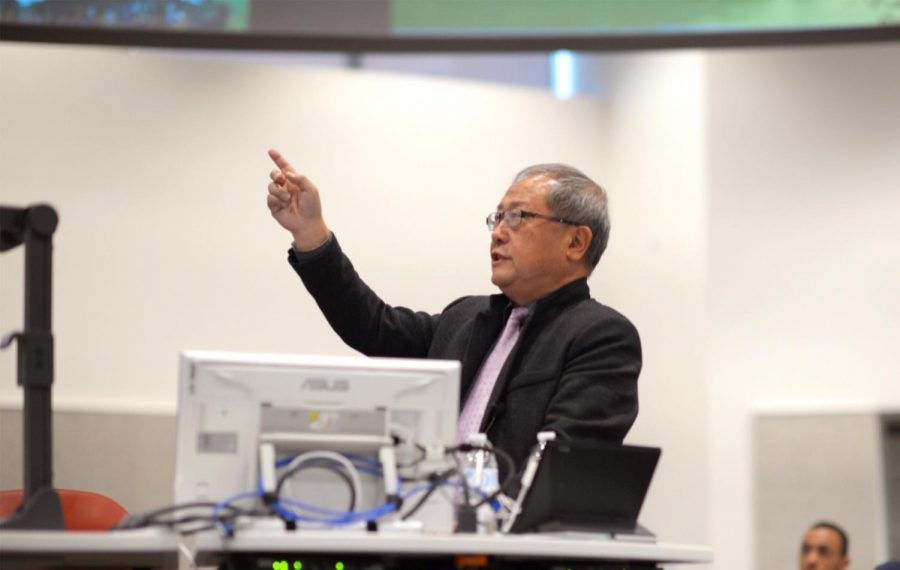Prof studies urban tech in rural homes
Chinese researcher seeks to modernize cave dwellings
GEORGE RODRIGUEZ | The Daily Evergreen
Liu Jiaping, right, director of the Green Architecture Research Center at the Xi’an University of Architecture and Technology presents his research in the SPARK.
April 2, 2018
As city populations swell, groups of researchers at WSU, University of Idaho and Chinese universities want to make sure rural communities reap some benefits of urban technological development.
Liu Jiaping, director of Green Architecture Research Center at China’s Xi’an University of Architecture and Technology, has focused some of his efforts on improving living conditions in shelters carved out of Northwestern Chinese cliffs and hillsides, called Yaodong.
“The reason why I’m doing research is because about 20 decades ago, the university started doing research on urban construction and urban expansion,” Jiaping said, “to meet the challenges to improve the rural living conditions of the cave dwellings.”
Jiaping’s talk was the keynote speech of WSU’s and UI’s Revitalizing Rural Environments Symposium.
He said the university was also researching ways to maintain traditional architecture because they have inherited a lot of “ecosophy,”meaning ecological balance.
Jiaping said the institution received appropriations from the central government of over 10 million Chinese yuan, or $1.59 million, to fund the research.
“Even though the megacities like Shanghai and Beijing have come to [as] comfortable [a] level as Chicago or New York City,” he said, “more than 60 percent of people who live in rural areas in west of China remain very poor.”
Jiaping said he particularly tried to experiment with underground pipes for ventilation to make use of the thermal mass, the ability of material to absorb and store heat energy.
“One that was eventually adopted was the one-way flow of the air for the natural ventilation,” he said.
Jiaping said it is obvious the living conditions of the old traditional cave dwelling can no longer meet the needs of the modern lifestyle.
“The cave dwellings in Yaodong have gone through many phases of evolution, with the current ones being standalone houses away from cliffs and slopes,” he said, “but their living conditions still remain very poor.




















